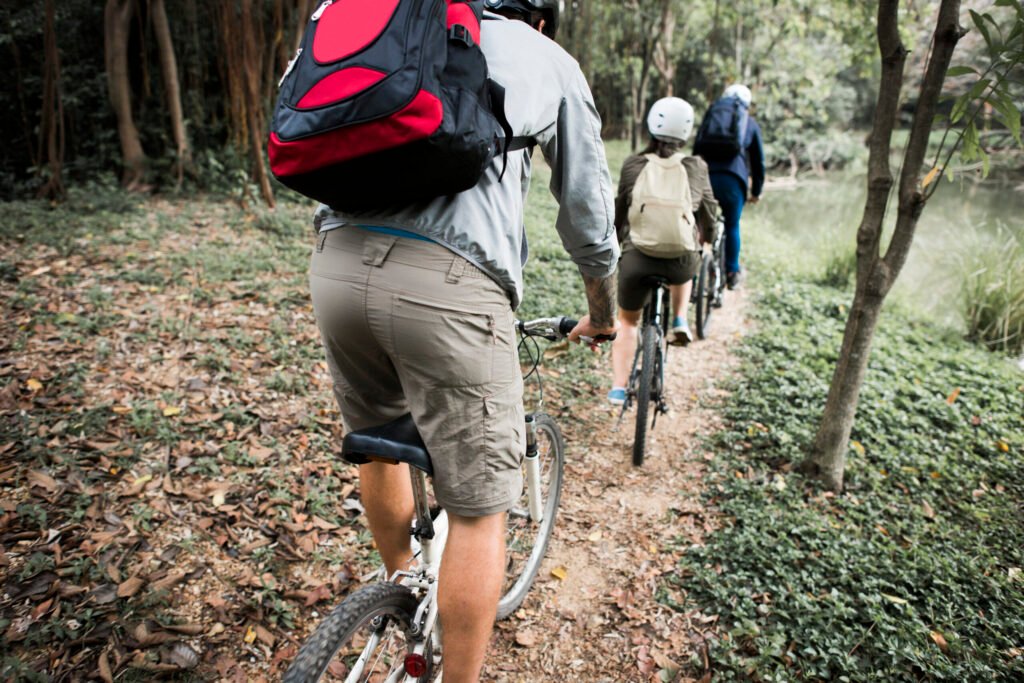The 20-30-50 Rule: The Simple Trail Etiquette Formula Creating Harmony Among Hikers, Bikers, and All
Master Trail Etiquette with the 20-30-50 rule: a simple formula for harmony among hikers, bikers, and equestrians. Learn how to apply this easy guideline for a more enjoyable outdoor experience.
Exploring nature’s beauty should feel effortless—but sharing paths with hikers, cyclists, and horseback riders requires teamwork. The 20-30-50 rule offers an easy-to-remember framework to keep outdoor adventures safe and enjoyable for everyone. This approach balances awareness, courtesy, and environmental care. Let’s discuss Trail Etiquette.
National parks like Yosemite and Yellowstone emphasize shared responsibility among visitors. Hikers ascending steep paths typically have the right of way, while groups should stay alert for others. Simple actions—like stepping aside for equestrians—prevent accidents and maintain the peaceful vibe of these spaces.
At its core, this system aligns with the golden rule: treat fellow adventurers and natural resources with respect. Following Leave No Trace principles ensures trails stay pristine. Pack out trash, stay on marked routes, and avoid disturbing wildlife.
Whether you’re hiking solo or biking with friends, understanding these basics builds harmony. Upcoming sections will dive deeper into planning your trip, communicating clearly on paths, and mastering situational awareness. Let’s make every outdoor journey memorable—for the right reasons.
Trail Etiquette: The 20-30-50 Rule Explained
The 20-30-50 rule emerged from decades of collaboration between outdoor enthusiasts and park rangers. Designed to clarify priorities on busy routes, it assigns percentages to three core principles: 20% awareness, 30% communication, and 50% action. This formula helps users make quick decisions when encountering others or navigating changing trail conditions.
Where Did This System Come From?
National park rangers noticed recurring conflicts among hikers, cyclists, and equestrians in the 1990s. After studying incidents in the Appalachian Trail and Colorado’s Mesa Verde, they created this ratio-based guide. The numbers reflect real-world needs: scanning your aware surroundings (20%), signaling intentions (30%), and executing safe maneuvers (50%).
Why Everyone Wins With This Approach
Following the 20-30-50 method reduces confusion about who has the way in common scenarios. For example, cyclists yield to hikers on narrow paths, while everyone steps aside for horses. Dog owners benefit too—keeping pets leashed prevents startling wildlife or other visitors.
| User Group | Key Responsibilities | Benefit |
|---|---|---|
| Hikers | Stay right, yield to horses | Clear passage uphill |
| Bikers | Announce overtaking, slow down | Prevent collisions |
| Equestrians | Control animal speed | Minimize trail erosion |
Parks like Grand Canyon enforce these guidelines through signage and ranger patrols. By sticking to marked routes, visitors protect fragile plant life on the side of paths. Simple choices—like pausing to let others pass—keep the outdoors enjoyable for all.
Planning and Preparation for a Respectful Outdoor Experience
Smart preparation transforms outdoor adventures from risky to rewarding. Before lacing up your boots, assess your route’s conditions and study recent trip reports. Mudslides, fallen trees, or wildlife activity can turn a peaceful hike into a challenge. Always check weather forecasts—a sunny morning might hide afternoon thunderstorms.

Assessing Trail Conditions, Weather, and Safety Essentials
Start by sharing your itinerary with a trusted contact. Include your expected return time and route details. Many parks require permits, so file them early. Pack the Ten Essentials: navigation tools, extra food, and a first aid kit. These items aren’t optional—they’re lifelines if plans go sideways.
Recent trip reports reveal real-time issues like washed-out bridges or bear sightings. Use apps like AllTrails to stay updated. If you know you’re hiking in rocky terrain, sturdy footwear prevents slips. Adjust your pace to match the group’s slowest member—rushing increases injury risks.
Respecting surroundings means sticking to marked paths and packing out trash. Avoid shortcuts that damage plants. When encountering other trail users, step aside calmly. A little common sense—like silencing your phone—preserves nature’s tranquility.
Preparation isn’t just about gear. Learn local wildlife habits. Carry bear spray in grizzly country, and store food properly. By planning thoroughly, you protect both your safety and the wilderness you came to enjoy.
Real-World Applications: Upholding Trail Etiquette on the Go
Mastering path manners ensures smooth interactions between everyone enjoying wild spaces. Whether navigating rocky slopes or narrow forest routes, simple choices maintain safety and preserve the great outdoors.
Understanding Right-of-Way: Hikers, Bikers, and Horses
Hikers should step aside for horseback riders—horses can startle easily. Cyclists must slow down and yield to both groups. On steep mountain paths, uphill travelers get priority to avoid disrupting their momentum.
Effective Communication and Group Coordination
Announce your presence with phrases like “Passing left!” to prevent surprises. Keep groups small and walk single-file on busy routes. For dogs, use short leashes and clean up waste promptly.
| Situation | Action | Outcome |
|---|---|---|
| Meeting horses | Step downhill, stay calm | Prevent animal spooking |
| Overtaking bikers | Ring bell, reduce speed | Avoid collisions |
| Group hiking | Designate a leader | Maintain steady pace |
Implementing Leave No Trace Principles
Stay trail-focused—straying damages plants and causes erosion. Pack out all trash, including food scraps. Observe wildlife from a distance; feeding animals disrupts their natural habits.
With these tips, every adventure supports the rules trail systems rely on. A friendly nod or “thank you” builds camaraderie among users. Together, we help keep wild spaces thriving.

Closing Perspectives for a Harmonious Trail Adventure
Every outdoor adventure leaves a mark—make yours positive by embracing mindful practices. The 20-30-50 rule simplifies decision-making: stay alert, communicate clearly, and act responsibly. Pair this with Leave No Trace principles to protect fragile ecosystems and wildlife habitats.
After your hike, share insights by writing trip reports. These help others plan better while highlighting changing water sources or animal activity. Keep dogs on a short leash—it prevents startling wildlife and maintains control in unpredictable terrain.
Small choices matter. Pack out trash to preserve water quality, and stick to marked paths to avoid erosion. A respectful attitude toward fellow adventurers fosters camaraderie—even a friendly nod builds community sense.
Reflect on your journey. Did you leave no trace? Could you improve next time? Consistent principles, like carrying a basic first aid kit, keep everyone safe. Remember, every little thing—from stepping downhill for horses to silencing your phone—shapes the outdoors we all share. For more great articles, go here.




